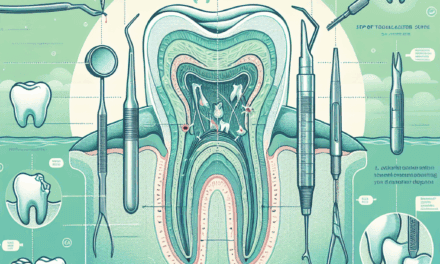Unraveling the Mind’s Restlessness: Insights from Psychologists on Rising Anxiety Trends
In recent years, anxiety has emerged as a significant mental health concern, affecting millions of individuals worldwide. The World Health Organization (WHO) has reported a staggering increase in anxiety disorders, particularly in the wake of global events such as the COVID-19 pandemic. This article delves into the multifaceted nature of anxiety, exploring its causes, manifestations, and the psychological insights that can help us understand and address this growing epidemic. We will examine five key subtopics: the rise of anxiety disorders, the role of technology, societal pressures, coping mechanisms, and therapeutic interventions.
The Rise of Anxiety Disorders
Anxiety disorders are among the most common mental health issues globally, with the WHO estimating that over 264 million people suffer from depression and anxiety. The rise in these disorders can be attributed to various factors, including environmental stressors, lifestyle changes, and societal expectations.
According to a study published in the journal Psychological Medicine, the prevalence of anxiety disorders has increased significantly over the past decade. The COVID-19 pandemic has exacerbated this trend, with surveys indicating that anxiety levels have surged among various demographics. For instance, a survey conducted by the American Psychological Association (APA) found that 78% of Americans reported feeling anxious about the future due to the pandemic.
Several factors contribute to the rising rates of anxiety disorders:
- Increased Awareness: There is a growing awareness of mental health issues, leading more individuals to seek help and receive diagnoses.
- Social Media Influence: The pervasive nature of social media can amplify feelings of inadequacy and anxiety, particularly among younger generations.
- Economic Uncertainty: Economic instability and job insecurity can lead to heightened stress and anxiety levels.
- Global Events: Events such as natural disasters, political unrest, and pandemics can trigger widespread anxiety.
Understanding the rise of anxiety disorders is crucial for developing effective interventions. Psychologists emphasize the importance of early detection and intervention, as untreated anxiety can lead to more severe mental health issues, including depression and substance abuse.
The Role of Technology
Technology has transformed the way we communicate, work, and live. While it offers numerous benefits, it also plays a significant role in the rising trends of anxiety. The constant connectivity provided by smartphones and social media can lead to information overload and increased stress levels.
Research indicates that excessive use of technology, particularly social media, is linked to higher levels of anxiety. A study published in the journal Computers in Human Behavior found that individuals who spend more than two hours a day on social media are more likely to report feelings of anxiety and depression. The curated nature of social media can create unrealistic expectations and foster feelings of inadequacy.
Key factors contributing to technology-induced anxiety include:
- Fear of Missing Out (FOMO): The constant stream of updates can lead to FOMO, where individuals feel anxious about not being part of social events or trends.
- Cyberbullying: Online harassment can have severe psychological effects, leading to increased anxiety and depression.
- Information Overload: The sheer volume of information available online can be overwhelming, leading to decision fatigue and anxiety.
- Sleep Disruption: Excessive screen time, especially before bed, can disrupt sleep patterns, contributing to anxiety.
To mitigate technology-related anxiety, psychologists recommend setting boundaries around technology use, such as designated screen-free times and mindful consumption of social media. Engaging in offline activities and fostering real-life connections can also help alleviate anxiety.
Societal Pressures and Expectations
Societal pressures play a significant role in shaping individuals’ mental health. The expectations placed on individuals to succeed academically, professionally, and socially can lead to heightened anxiety levels. The pressure to conform to societal norms can be particularly intense for young people, who are often navigating multiple transitions in their lives.
Research indicates that societal expectations can lead to performance anxiety, where individuals feel overwhelmed by the need to excel. A study published in the journal Frontiers in Psychology found that students experiencing high levels of academic pressure reported increased anxiety and stress levels.
Factors contributing to societal pressures include:
- Academic Expectations: The competitive nature of education can lead to anxiety among students striving for high grades and college admissions.
- Workplace Demands: The pressure to perform in the workplace can lead to burnout and anxiety, particularly in high-stakes environments.
- Social Comparisons: The tendency to compare oneself to others can foster feelings of inadequacy and anxiety.
- Cultural Norms: Cultural expectations regarding success, relationships, and lifestyle choices can create additional stress.
Addressing societal pressures requires a collective effort to redefine success and promote mental well-being. Psychologists advocate for creating supportive environments that prioritize mental health and encourage open discussions about anxiety and stress.
Coping Mechanisms: Navigating Anxiety
Effective coping mechanisms are essential for managing anxiety. Individuals often employ various strategies to cope with their anxiety, ranging from healthy practices to maladaptive behaviors. Understanding these mechanisms can help individuals develop healthier ways to navigate their anxiety.
Common coping mechanisms include:
- Mindfulness and Meditation: Mindfulness practices can help individuals stay present and reduce anxiety. Research has shown that mindfulness meditation can significantly decrease anxiety levels.
- Physical Activity: Regular exercise is known to release endorphins, which can improve mood and reduce anxiety. A study published in the journal JAMA Psychiatry found that individuals who engage in regular physical activity report lower levels of anxiety.
- Social Support: Connecting with friends and family can provide emotional support and reduce feelings of isolation. Studies have shown that strong social networks can buffer against anxiety.
- Professional Help: Seeking therapy or counseling can provide individuals with tools to manage their anxiety effectively. Cognitive-behavioral therapy (CBT) is particularly effective in treating anxiety disorders.
While some individuals may resort to maladaptive coping mechanisms, such as substance abuse or avoidance behaviors, it is crucial to recognize these patterns and seek healthier alternatives. Psychologists emphasize the importance of self-awareness and self-compassion in the coping process.
Therapeutic Interventions: A Path to Healing
Therapeutic interventions play a vital role in addressing anxiety disorders. Various approaches, including psychotherapy, medication, and holistic practices, can help individuals manage their anxiety effectively.
Common therapeutic interventions include:
- Cognitive-Behavioral Therapy (CBT): CBT is a widely used therapeutic approach that focuses on identifying and changing negative thought patterns. Research has shown that CBT is effective in reducing anxiety symptoms.
- Medication: Antidepressants and anti-anxiety medications can be prescribed to help manage anxiety symptoms. A study published in The Lancet found that medication can be effective for individuals with moderate to severe anxiety disorders.
- Mindfulness-Based Stress Reduction (MBSR): MBSR programs combine mindfulness meditation and yoga to help individuals manage stress and anxiety. Research indicates that MBSR can lead to significant reductions in anxiety levels.
- Support Groups: Participating in support groups can provide individuals with a sense of community and shared experiences, reducing feelings of isolation.
It is essential for individuals to work with mental health professionals to determine the most appropriate interventions for their specific needs. A personalized approach can lead to more effective outcomes in managing anxiety.
Conclusion: Navigating the Landscape of Anxiety
The rising trends of anxiety disorders reflect a complex interplay of societal, technological, and psychological factors. As we navigate this landscape, it is crucial to foster awareness and understanding of anxiety and its impact on individuals and communities. By recognizing the signs of anxiety, promoting healthy coping mechanisms, and advocating for effective therapeutic interventions, we can work towards alleviating the burden of anxiety on our society.
Key takeaways from this exploration include:
- The prevalence of anxiety disorders is on the rise, exacerbated by global events and societal pressures.
- Technology plays a dual role in contributing to and alleviating anxiety, necessitating mindful usage.
- Societal expectations can create significant stress, highlighting the need for supportive environments.
- Effective coping mechanisms and therapeutic interventions are essential for managing anxiety.
- Collective efforts are needed to promote mental well-being and redefine success in our society.
As we continue to unravel the complexities of the mind’s restlessness, it is imperative to prioritize mental health and foster a culture of understanding and support. By doing so, we can pave the way for a healthier, more resilient society.





